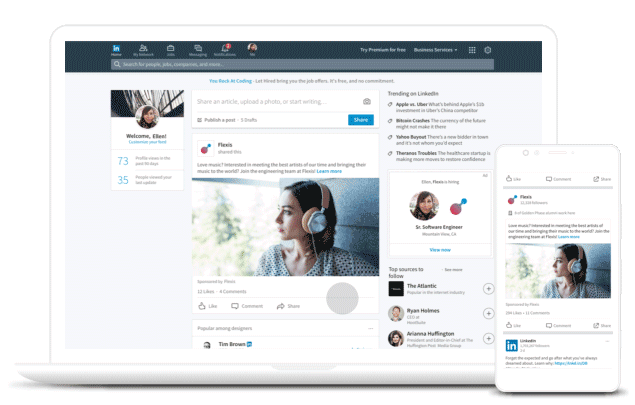Employers have been searching for effective ways to connect with passive candidates, or those who aren’t actively looking for employment, for years. Facebook likes and Twitter followers were popular for awhile. Jobs2Web’s platform allowed candidates to supply a small amount of information instead of an entire resume, which worked well for mobile users who were unwilling to fill out a lengthy application.
LinkedIn‘s latest offering, Pipeline Builder, is the next iteration in hooking passive candidate and throwing them into a company’s candidate funnel. Simply put, LinkedIn users who land on your company page can click a button that says, “I’m Interested,” which will put them into a dashboard of candidates who are open to learning more about employment opportunities or just keeping in touch with the organization.
Here are the details:
- Recruiters choose specific criteria for the candidates they want and ads are served to LinkedIn members who fit that criteria.
- Those prospects are served a personalized landing page with their name and specially crafted message in the headline, relevant YouTube videos and content for that role, even a look at who would be on their teams.
- With a simple click of the “I’m Interested” button from the landing page, prospects can share their LinkedIn profile information (and even a phone number), directly to the hiring teams which will then be flagged in their LinkedIn Recruiter lists for easy outreach.

The line between marketing and recruiting continues to blur. Enticing prospects to join newsletters, unlock discount codes and text keywords to shortcodes in order to connect with a retailer have been going on for over a decade now. Recruiting is just now catching on with products like this.
It’s another solid offering from LinkedIn, who seems to be making the most of Microsoft’s resources and relinquishing very little ground to well-funded competitors like Google and Facebook. Microsoft owns LinkedIn.
First, it introduces LinkedIn as an advertising option to those who haven’t considered it before. In the process, it potentially takes money out of the pockets of competitors like Google, Facebook and Indeed.
Second, it leverages the treasure trove of data that many of its competitors don’t have. There’s less friction in this solution for everyone because LinkedIn already knows all your information. All a visitor has to do is click and everything gets autopopulated.
Third, Pipeline Builder is built on a foundation of trust. LinkedIn users have a significantly higher comfort level on Linkedin that data isn’t going to be shared or publicized. It may be a false sense of security, but studies back it up. Liking a company on Facebook or even submitting an email address on a corporate site isn’t the same.
LinkedIn said 90 percent of candidates are open to the right opportunity if it’s presented at the right time. By using Pipeline Builder, LinkedIn believes employers can take unaware talent and make it aware through advertising, then potentially turn a visitor into an interested candidate, which can then lead to an application and a hire.
“Pipeline Builder has connected us with candidates we may not have been in contact with before,” said Amy Ste Marie, talent acquisition manager at Invesco. Their campaign revealed 96 percent of their opt-ins had not previously viewed an Invesco job posting. In nine weeks, the company drove 485 leads through Pipeline Builder. Budget of the ad campaign was not disclosed.
A marketing professional might look at this feature and think it could be an enhancement from 2010. But this is recruiting we’re talking about, so LinkedIn has the luxury of not needing to be Hubspot or Marketo to be a trailblazer. And this move likely keeps them well ahead of the competition in their core competency, managing and engaging talent within their own ecosystem.
